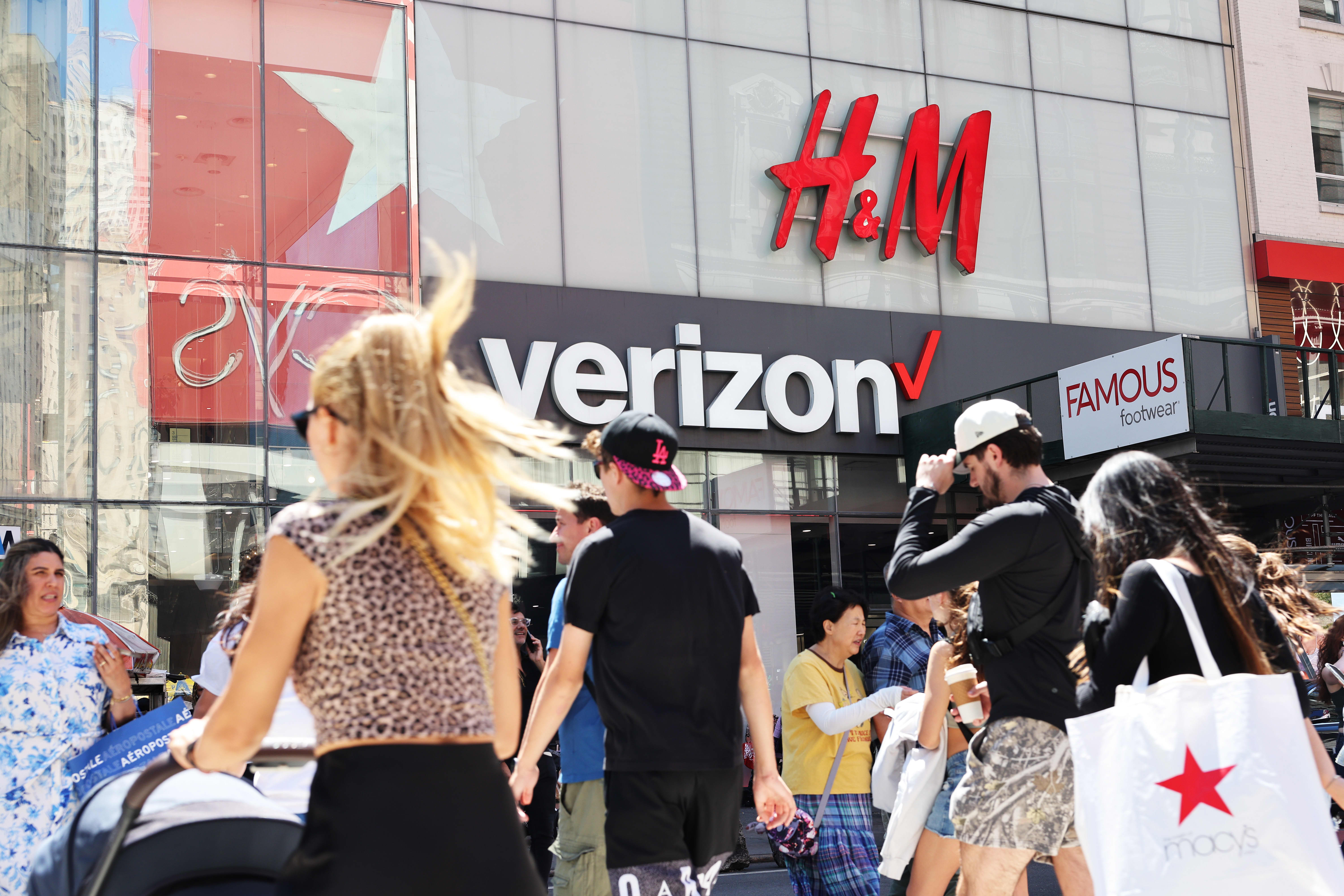
An H&M store is seen in Herald Square on July 01, 2024 in New York City.
Michael M. Santiago | Getty Images
Consumer spending held up even better than expected in July as inflation pressures showed more signs of easing, the Commerce Department reported Thursday.
Advanced retail sales accelerated 1% on the month, according to numbers that are adjusted for seasonality but not inflation. Economists surveyed by Dow Jones had been looking for a 0.3% increase. June sales were revised to a decline of 0.2% after initially being reported as flat.
Excluding auto-related items, sales increased 0.4%, also better than the 0.1% forecast.
There was also good news on the labor market front: Initial unemployment benefit claims for the week ended Aug. 10 totaled 227,000, a decrease of 7,000 from the previous week and lower than the estimate for 235,000.
Gains in sales were propelled by increases at motor vehicle and parts dealers (3.6%), electronics and appliance stores (1.6%), and food and beverage outlets (0.9%). Miscellaneous retailers saw a plunge of 2.5% while gas stations saw receipts climb just 0.1% and clothing stores were down 0.1%.
Stock market futures rose sharply following the Thursday morning data releases, while Treasury yields spiked as well.
“Once again, this was further evidence that the U.S. consumer still has the ability to surprise to the upside,” wrote Richard de Chazal, macro analyst at William Blair. “This was another solid report, and inconsistent with a consumer who is on the brink of collapse.”
The report comes the same week as data showing that inflation eased slightly in July.
Prices that consumers pay for goods and services increased 0.2% on the month, and the annual inflation rate declined to 2.9%, its lowest since March 2021. At the same time, wholesale prices were up just 0.1% on the month and 2.2% on the year.
While the inflation numbers remain above the Federal Reserve’s 2% target, the data shows continued easing of price pressures that had peaked two years ago. Financial markets expect the Fed to respond with its first rate cut in more than four years when it next meets in September, though a resilient consumer could give policymakers more reason to take a measured approach to cuts.
Echoing the theme of a stable consumer, Walmart earlier Thursday reported strong earnings and sales for the previous quarter and raised its outlook, though it sounded some cautionary notes about the second half of 2024.
In addition to looking for lower rates, investors also increasingly are expecting the Fed to turn its attention from a laser focus on inflation to a broader look at potentially weakening conditions in the labor market and elsewhere.
Unemployment benefit filings numbers from the Labor Department also showed that continuing claims, which run a week behind, declined slightly to 1.864 million. A weaker-than-expected July payrolls report had stirred concern that the labor market could be weakening.
Other economic data released Thursday showed that the manufacturing picture is wobbling.
The New York Fed’s Empire State Manufacturing gauge edged higher but was still in negative territory at -4.7, slightly better than the -6 estimate. At the same time, the Philadelphia Fed manufacturing measure slid to -7, its first negative reading since January and well below the forecast for 7.9.
Both indexes measure the percentage of companies reporting expansion against contraction.

